Match the four starting materials (P,Q,R,S) given in List-I with the correspoinding reaction schemes (I, II, III, IV) provided in List - II and select the correct answer using the code given below the lists
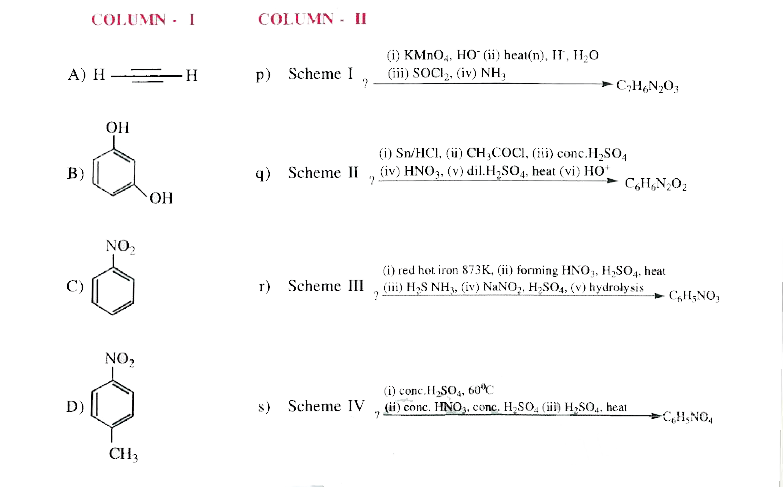 Solution in Telugu
Solution in Telugu
AQRS1423
AQRS3142
AQRS3421
AQRS4132
The correct Answer is:A, B, C, D
The following Structure are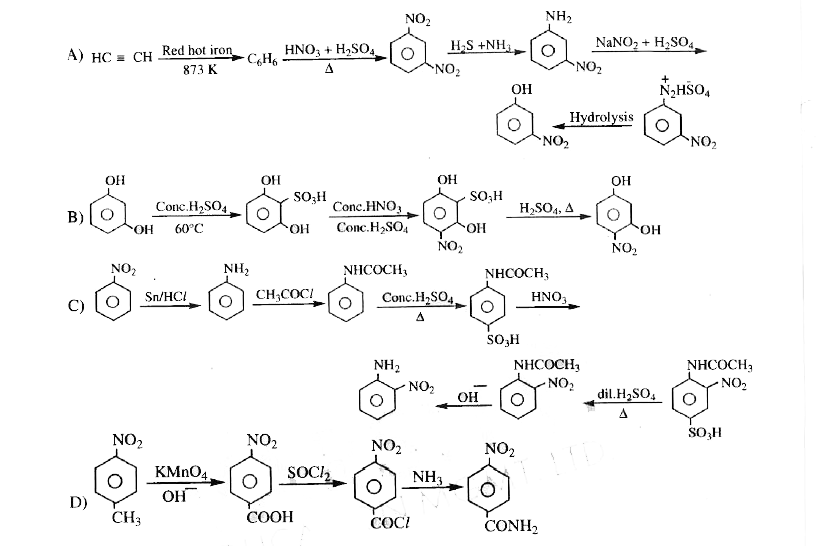
Topper's Solved these Questions
- BOOK - AAKASH SERIESCHAPTER - AMINES AND AZO COMPOUNDS EXERCISE - LEVEL - II (LECTURE SHEET) EXERCISE-IV (Integer answer type Questions)6videos
AMINES AND AZO COMPOUNDS
- BOOK - AAKASH SERIESCHAPTER - AMINES AND AZO COMPOUNDS EXERCISE - PRACTICE SHEET - 1 (Single answer questions)11videos
AMINES AND AZO COMPOUNDS
- BOOK - AAKASH SERIESCHAPTER - AMINES AND AZO COMPOUNDS EXERCISE - LEVEL - II (LECTURE SHEET) EXERCISE-III (Linked Comprehension type questions) Passage - II :3videos
AMINES AND AZO COMPOUNDS
- BOOK - AAKASH SERIESCHAPTER - ALKYL AND ARYL HALIDESEXERCISE - OBJECTIVE EXERCISE - 4 (ASSERTION (A) & REASON (R) TYPE QUESTIONS)19videos
ALKYL AND ARYL HALIDES
- BOOK - AAKASH SERIESCHAPTER - AMINES AND DIAZONIUM SLATSEXERCISE - PRACTICE EXERCISE25videos
AMINES AND DIAZONIUM SLATS
Similar Questions
The number of resonating structures of arylammonium ion is
View SolutionWhich of the following is the strongest base in aqueous solution
View SolutionA, B, C are with molecular formula C8H11N three isomeric amines. A and B react with CHCl3+KOH but not C. C reacts with NaNO2+HCl to give yellow oily liquid. A and B on treatment with Br2 and acetic acid separately produced compounds D (C8H9NBr2) and E(C8H8NBr3).
The name of compound B is likely to beView Solution(A) Towards SN2 reaction, order of reactivity is CH3Br>CH3CH2Br>(CH3)2CHBr>(CH3)3CBr.
(R) Greater the stability of carbocation, greater will be its ease of formation from alkyl halide and faster will be the rate of SN1 reaction.View SolutionIUPAC name of (C2H5)3C−NH2 is
View SolutionMatch the four starting materials (P,Q,R,S) gien in List-I with the corresponding reaction schemes (I,II,III,IV) provided in List II and select the correct answer using the code given below the lists.
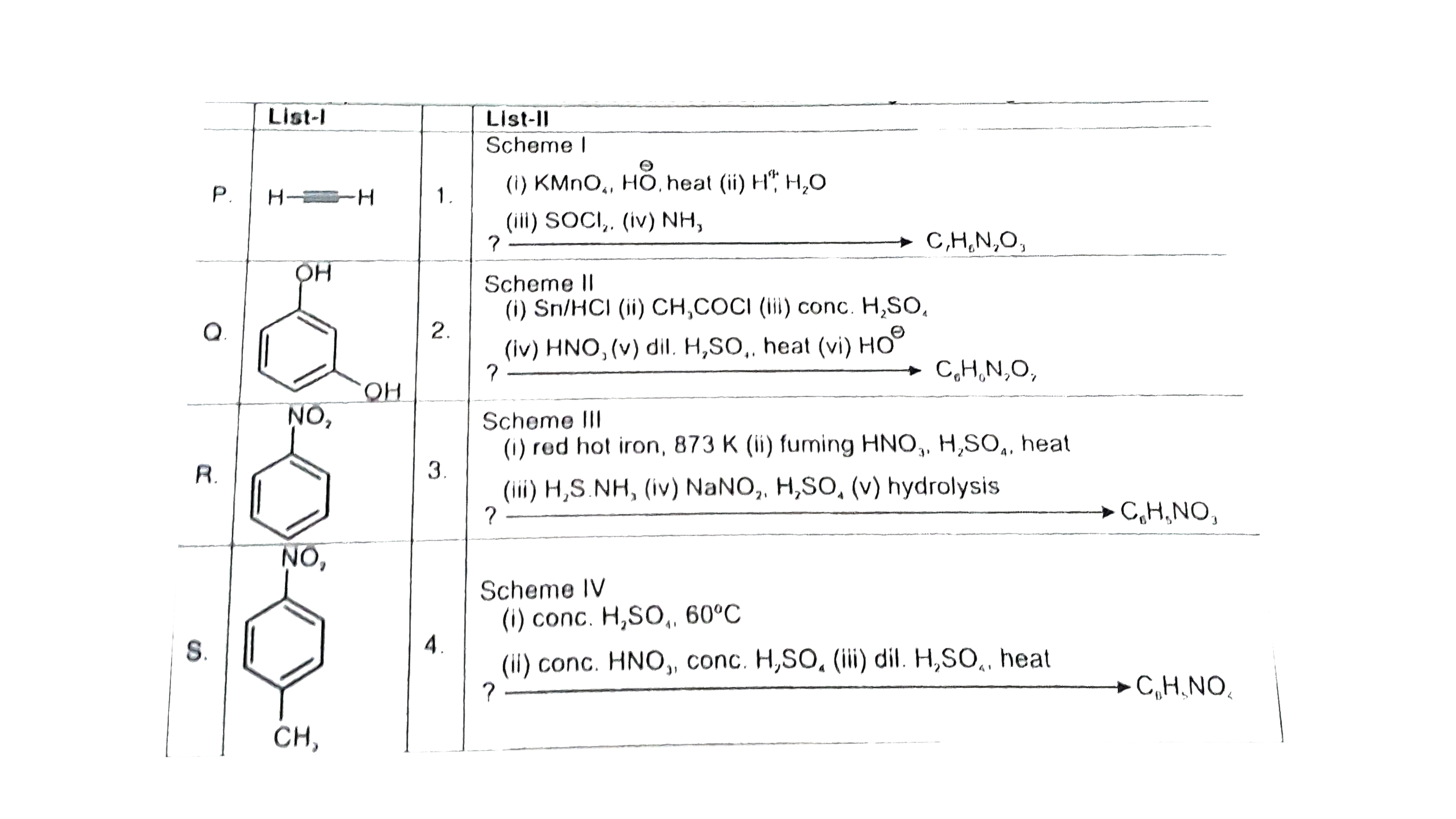 01:24View Solution
01:24View SolutionMatch List I (Reaction ) with List II (Type of reaction ) and select the correct answer using the code given below the lists :
View SolutionMatch List I (Reaction) with List II (Type of reaction ) and select the correct answer using the code given below the lists :
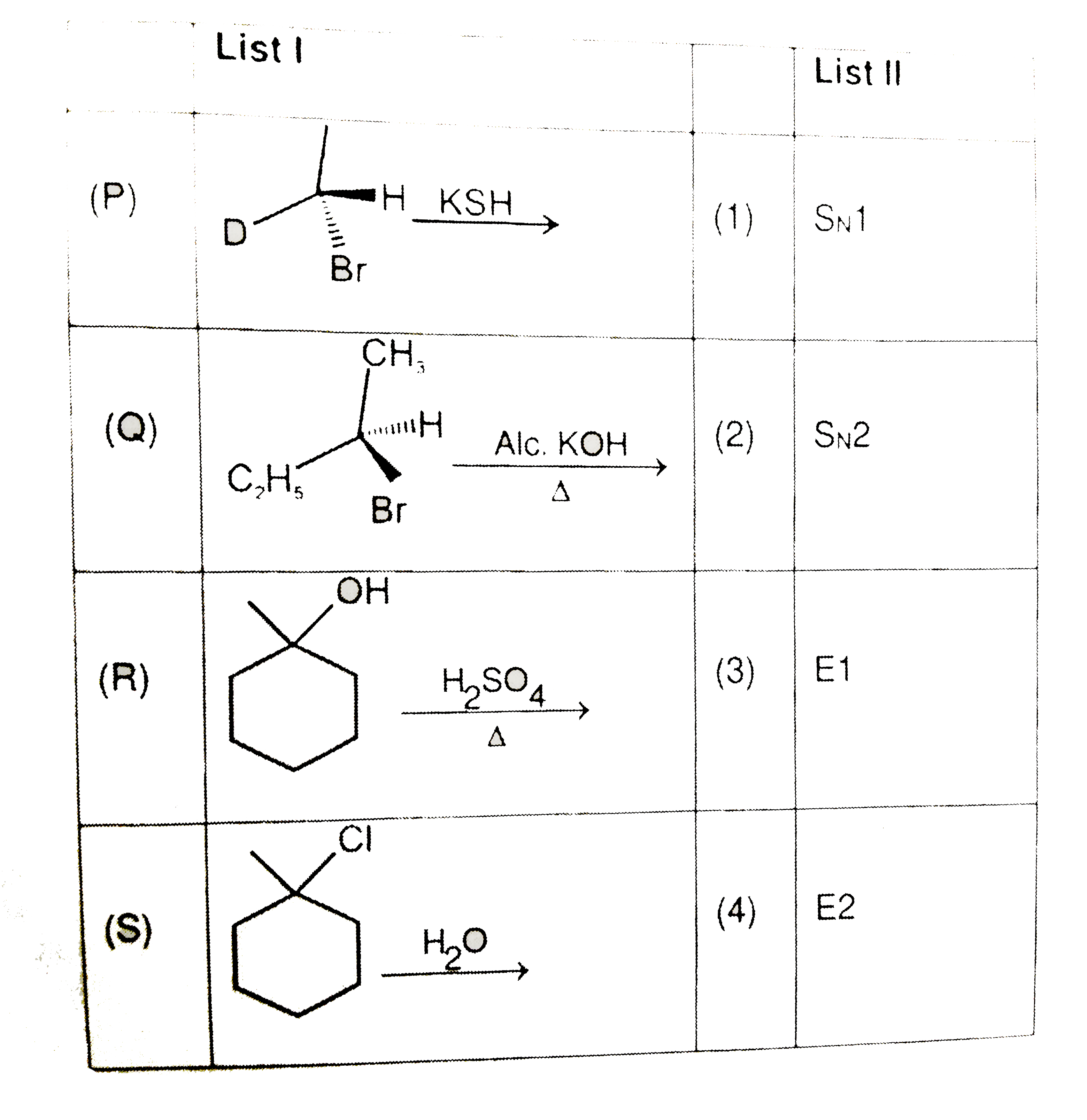 03:21View Solution
03:21View SolutionMatch List I (Reaction) with List II (Type of reaction ) and select the correct answer using the code given below the lists :
05:41View SolutionMatch the reducing agents of List-II with the reaction of List-I and select the correct answer using the code given below the lists.
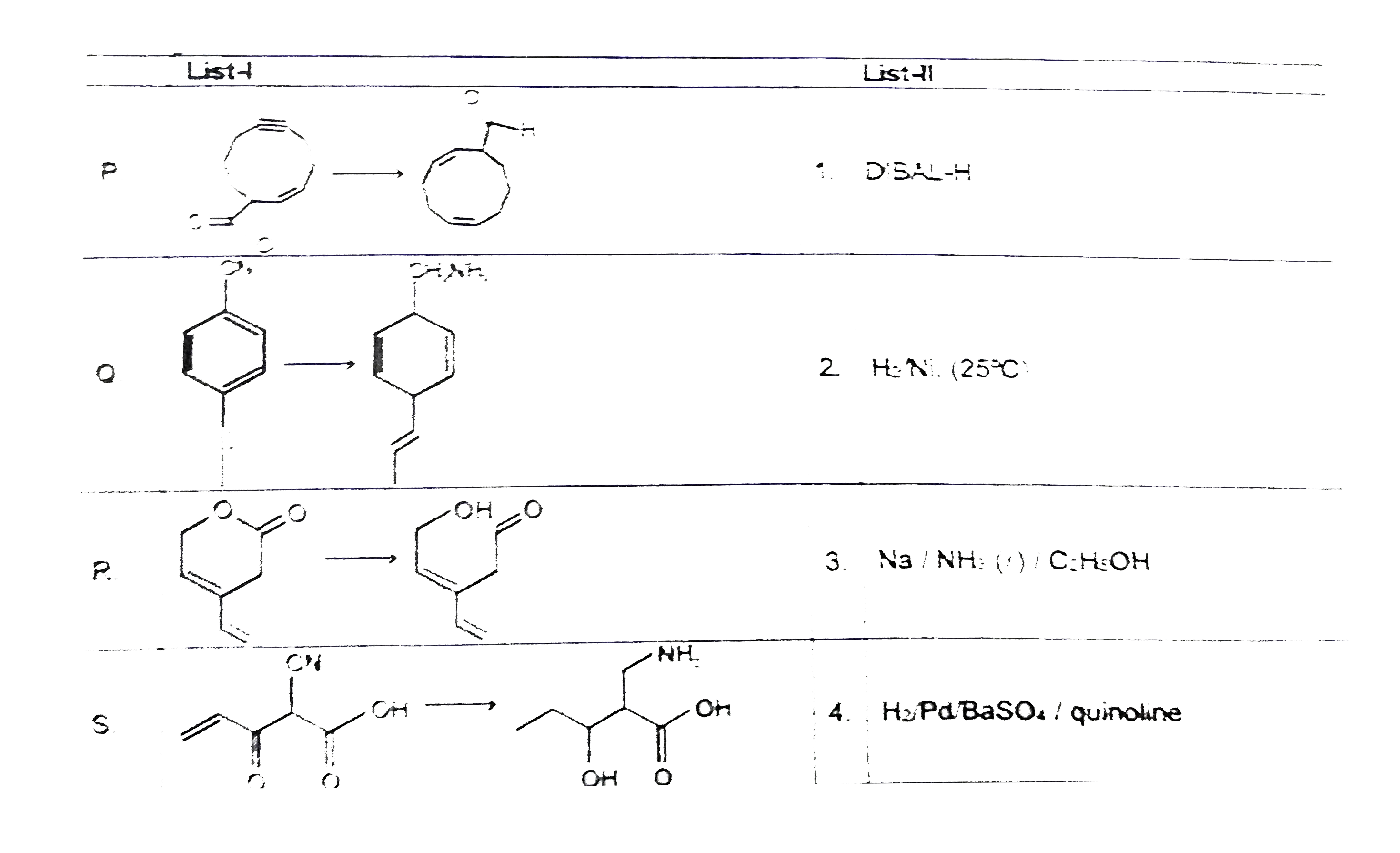 View Solution
View SolutionThe unbalanced chemical reactions given In list I show missing reagent or condition (?) Which are provided in List II. Match List I with List II and select the correct answer using the code given below the list:
View SolutionMatch the four material (P, Q, R, S) given in List -I with the corresponding reaction schemes (I, II, III, IV) provided in List-II and select the correct answer using the code given below the lists.
04:31View SolutionThe unbalanced chemical reactions given in List I show missing reagent or condition (?) which are provided in List II. Match List I with List II and select the correct answer using the code given below the lists:
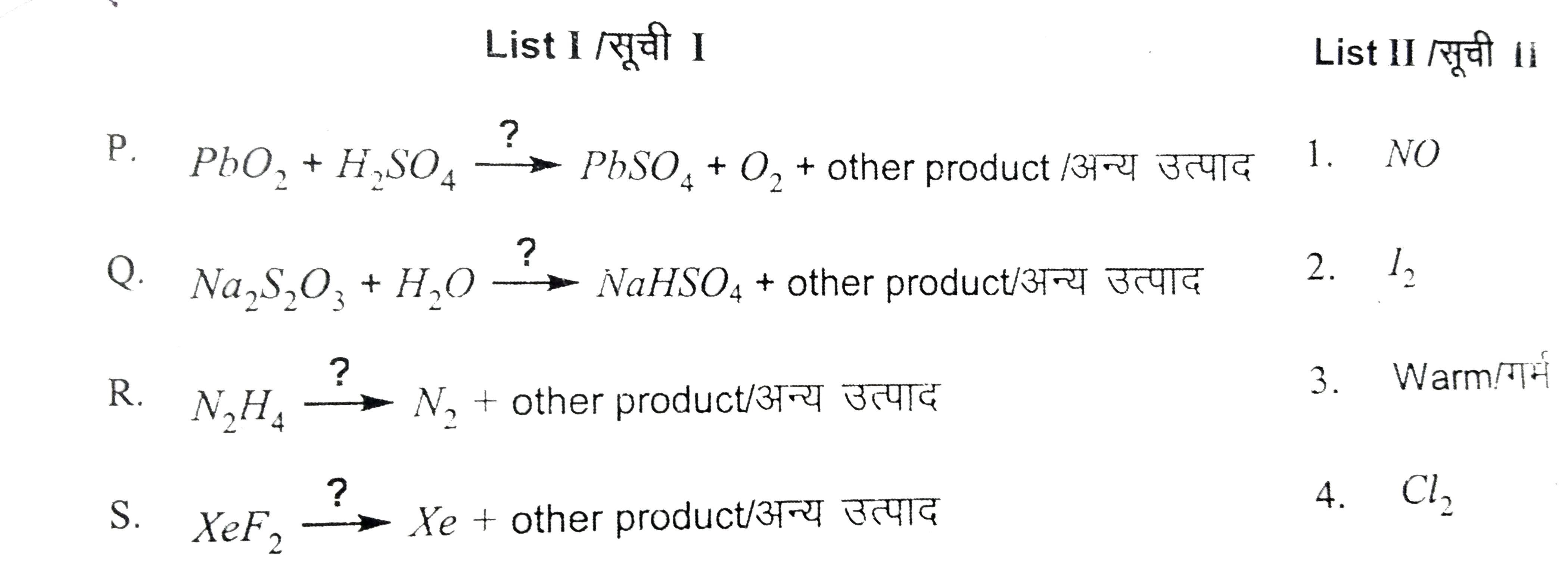 08:26View Solution
08:26View SolutionMatch List I with List II. Select the correct answer using the codes given below the list

Answer the code07:32View SolutionMatch List-I (reaction) with List-II (name of the reaction) and select the correct answer using the codes given below the lists:
 04:34View Solution
04:34View Solution

